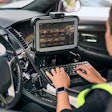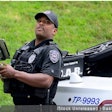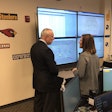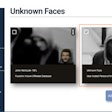Editor's note: The Raytheon applications are being developed for both iPhone and Android operating platforms. The author is an employee of Raytheon who works in the Civil Communication Solutions Group.
The iPhone and its applications seem to be everywhere. They help people connect to social networks, find a good restaurant and donate to charity. And now, the iPhone's capabilities are going onto the battlefield with a series of applications developed by Raytheon that are poised to revolutionize the efficiency of soldiers' situational awareness.
But why stop at the battlefield? I am struck by the potential for uniformed patrols, special enforcement units, SWAT teams and surveillance units to take advantage of these new applications for a device that many officers already know and use.
For instance, Raytheon's new series of iPhone applications—called Raytheon Android Tactical System (RATS)—will make it possible to track 10 to 20 soldiers (or officers) at a time on mapping software; transmit data or photos to and from handheld units; network previously incompatible communications equipment, including computers, mobile devices and servers; and encrypt information to meet various government security requirements.
What does all of this mean? Imagine a 10-officer team staking out a group of suspects from several locations simultaneously. Now, imagine the supervisor and team can observe each others' movements, simultaneously communicate via text message and call up a map of an entire building that suspects are about to enter. Imagine being an executive in your agency while your team is out on surveillance - you can be part of the force from wherever you are, with your phone receiving all the same real-time information as your team in the field.
The capacity of these applications is only limited by the imagination. As the mobile technology revolution continues and law enforcement becomes comfortable with devices smaller and more capable than standard handheld radios, applications can become an extraordinary tool.
This idea is not far off in the future either; it's here now. Several major cities, including New York and San Francisco, are encouraging developers to create applications that allow citizens greater communication with government—from accessing public transit schedules to providing crime tips. Law enforcement can similarly drive demand for such innovative applications by not allowing satisfaction with available technology to limit our capabilities or imaginations.














